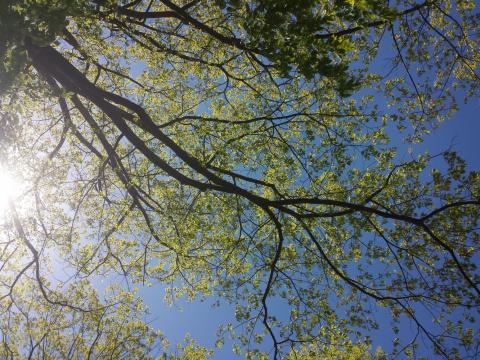A reflection on time and phenology in the time of COVID

This spring, many people have felt confronted with a disorienting shift in time. For some, it might feel like time has paused or stopped. We still move through time—there have been birthdays, holidays, births and deaths—but, for some, these occasions might seem to feel untethered to a linear progression of time.
The changes brought about by COVID-19, including stay-at-home orders, provide an opportunity to explore our relationship and the environment’s relationship with time.
Time can be viewed as linear and/or cyclic. Many people often view life as linear, every day amassing experiences and memories that can be looked back on in a series of chronological events from birth to death. By contrast, the natural world operates on a cyclical clock.
Scientists call the natural rhythms observed by plants and animals phenology and track how these cycles are changing.
Some examples include the date that forsythia flowers burst, or the date the Baltimore orioles return.
Spring is a season primed for observing phenology in the natural world because things happen so quickly. Beech buds leaf out, tulips petals fall, birds appear; all are responding to the natural rhythms and cycles of Earth.
If time feels like it is standing still for you, take a moment, once a week, once a day or as often as you think of it, to observe what’s happening outside.
It can be helpful to anchor yourself within a cyclical understanding of time.
Keep a journal and jot down what’s happening in your yard or the tree outside your window. You can also use these protocols to connect with one plant. You can even share your findings as a citizen scientist through apps like iNaturalist.